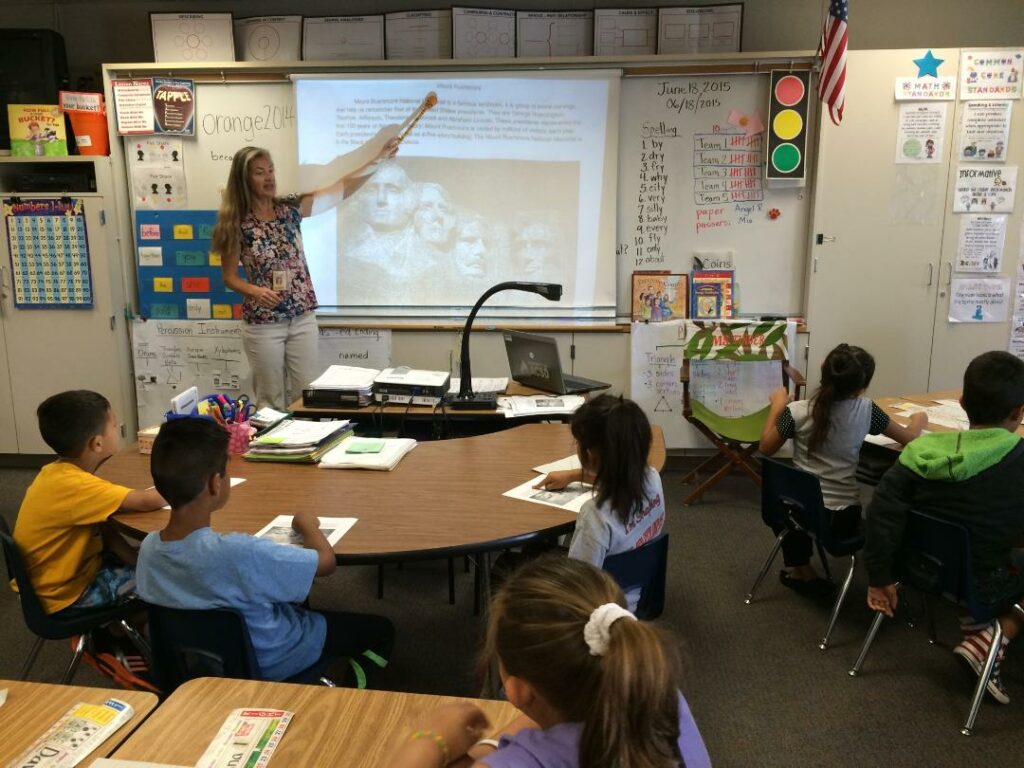Teachers need opportunities to heal before the school year begins
Photo: Beatrix Hauptmann
 Photo: Beatrix Hauptmann
Photo: Beatrix Hauptmann
Every bit school districts and county offices of didactics make plans for safely reopening schools in the fall and helping students cope with their trauma, it is urgent that they also recognize and make space for teachers to procedure and heal from their own feelings of loss and grief.
Nearly every teacher we have e'er worked with puts their emotional needs aside in guild to address the emotional needs of their students when tragedy inevitably occurs in our schools. Nosotros experienced this immediate in our own classrooms when we were high school teachers. That capacity to harness deep empathy for others is one of the most beauteous characteristics of teachers — merely is as well deeply damaging for their mental health in the long run without support.
Merely now, in the face of racial violence and the immense loss of life due to the global pandemic, teachers are coping with tremendous loss, anxiety and sorrow even equally they work harder than e'er at their rapidly evolving jobs.
Saddled past this emotional weight too as anxiety for the precarious fiscal situations families are facing, many are approaching a breaking point. Co-ordinate to a recent The states Today poll, nearly two-thirds of teachers don't feel they are able to properly complete their jobs under current conditions and 1 in 5 may not render for the fall.
Teachers volition exist the beginning to tell yous that students are the highest priority. The demand of students to heal in the fourth dimension of this pandemic is substantial and long-lasting. Nosotros know the widespread illness, expiry and economic insecurity will take a lasting event on this generation of young people.
But teachers are likewise calling out for assist and ignoring them will only injure students further. Concern for student wellbeing and trauma is oftentimes brought up right now, only we fail to provide the aforementioned empathy for teachers, treating them every bit unfeeling automatons within our frail and bruised educational activity arrangement.
Yet, real recognition of the trauma teachers face is almost entirely absent-minded from district and state-level discussions around how to reopen schools. While we do not know how every district is responding to teacher needs, we know that — equally a whole — information technology is not enough. In weekly digital gatherings with hundreds of English language teachers from beyond the state, we consistently hear that teachers are pain and need support to process complicated emotions.
Unfortunately, there are no quick-fix solutions for teacher healing. Mandating teachers to attend training courses on how to handle trauma and loss likely would just increase the burdens on time and capacity that they already face. Too, it is not enough to presume that the upcoming summer break will heal all wounds. But ignoring teacher loss does not brand trauma disappear — regardless of the weeks or months of fourth dimension. Further, with current infection rates around the land rising sharply right now, we can presume that this summer will not serve as respite from the losses and uncertainty our nation continues to face.
Yet many plans for supporting teachers largely amount to providing additional professional development and resources that teachers may elect to access. On top of that, already overworked administrators are asked to monitor teacher wellness. In brusque, the proposed plan further taxes the energies of non just teachers but also administrators while they are attempting to operate schools under unimagined circumstances.
Acknowledgement from state and national officials of teachers' need for time to process and heal from these traumas would be a outset. Such acknowledgement would let parents, students and community members know the difficulties teachers now face every day on height of a host of new work demands. It as well would help teachers have that it'southward OK to grieve.
Online sessions for teachers to share their feelings candidly are ane way to help teachers process their emotions. Ensuring that teachers have and tin utilise official bereavement leave to take compensated fourth dimension for healing would be another.
Districts are moving quickly with plans for the side by side schoolhouse year. But measurements for how far autonomously desks can be, staggered reopening schedules and class-size reduction plans and mask protocols will not relieve the hurting teachers are feeling right at present. A reconfigured school cannot function finer without the energy, ingenuity and love imparted by teachers.
How students larn and procedure their grief and feelings in schools will depend on how well their teachers are mentally and emotionally prepared to return to the classroom.
We owe our teachers space, fourth dimension and resources for healing.
•••
Antero Garcia is an assistant professor in the Graduate Schoolhouse of Education at Stanford University. Nicole Mirra is an assistant professor of urban teacher teaching at the Rutgers Graduate School of Instruction, the Country University of New Jersey.
The opinions in this commentary are those of the author. Commentaries published on EdSource represent viewpoints from EdSource'southward broad audience. As an independent, non-partisan organization, EdSource does non take a position on legislation or policy. We welcome guest commentaries that reflect the diversity of California. If you would like to submit a commentary, please review our guidelines and contact us.
To get more reports similar this one, click here to sign up for EdSource'south no-cost daily electronic mail on latest developments in education.
antonieffthonflused.blogspot.com
Source: https://edsource.org/2020/teachers-need-opportunities-to-heal-before-the-school-year-begins/633287
